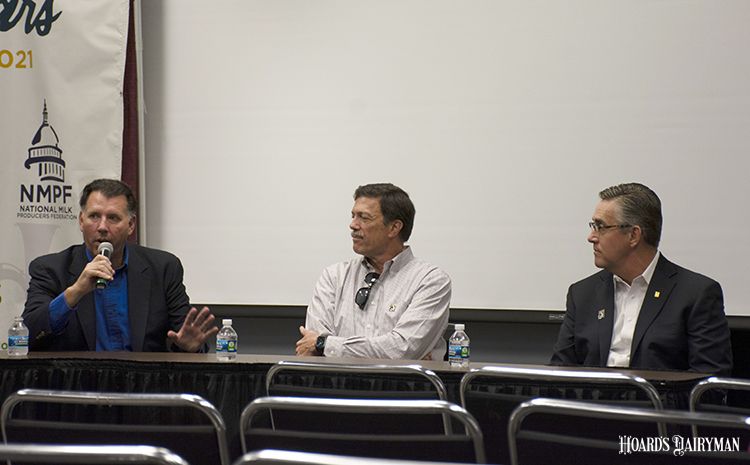
That was one question posed to a panel of agricultural financial lenders during the World Dairy Expo’s educational seminar titled, “How we are evaluating farm loans.” According to Matthew Wilson of Rabo AgriFinance, his best dairy farmer clients know their numbers.
“They tend to be very detailed orientated in terms of profits, losses, and cost of production,” Wilson said. “That’s the most common factor I see.”
Sam Miller, a lender for BMO Harris, shared a similar observation.
“These farms plan, execute, and monitor,” he stated. “First, they put a plan together for the business. Then they follow through on that plan.”
Miller continued, “The most important part is monitoring, because plans never work out.”
He said his top producers monitor a couple of different dashboards on a daily, weekly, monthly, and annual basis. For most farms, this includes production and financial metrics.
At the very top are producers that he said monitor a macro dashboard as well, looking at factors such as export demand and changing interest rates. “Those dashboards give you an idea of how to adjust your plan and execute in a different way,” he explained.
Of course, there is more to farming than monitoring numbers. Roger Murray of FarmCredit East said that when he started in the lending business four decades ago, a lot of his dairy farmer customers were really good with cows but not so good at working with people. “The top producers today are really good with people,” he shared. “They also have a zest for learning.”
Through the people they hire or advisers they work with regularly, Murray said these producers are constantly seeking out different ways to bring new ideas to the farm.
The next generation
If a young person wants to start farming, Murray encouraged them to work closely with a mentor or two. He said to not be afraid to travel out of the county, state, or even the country to see different ways of dairying. He also emphasized the importance of having a passion for your work.
Wilson noted that the path to farm ownership may be indirect. He shared the story of one of his clients who grew up on a dairy that had to be sold. This young person got into the cattle buying business to build up equity and eventually built his way into a dairy.
“The path may take a little different direction than simply walking onto a place,” he reiterated.
Miller reminded the audience that the path to farm ownership is a marathon, not a sprint. “It is going to take some time,” he said. “You need some experience, you need to build equity, and you may need some help along the way.”
While the process can be daunting, all three lenders still see potential in the industry.
“There’s a big future for young people who want to get involved in this business,” Miller concluded. “Having that passion and desire to get into the business, you already have a step up.”
























